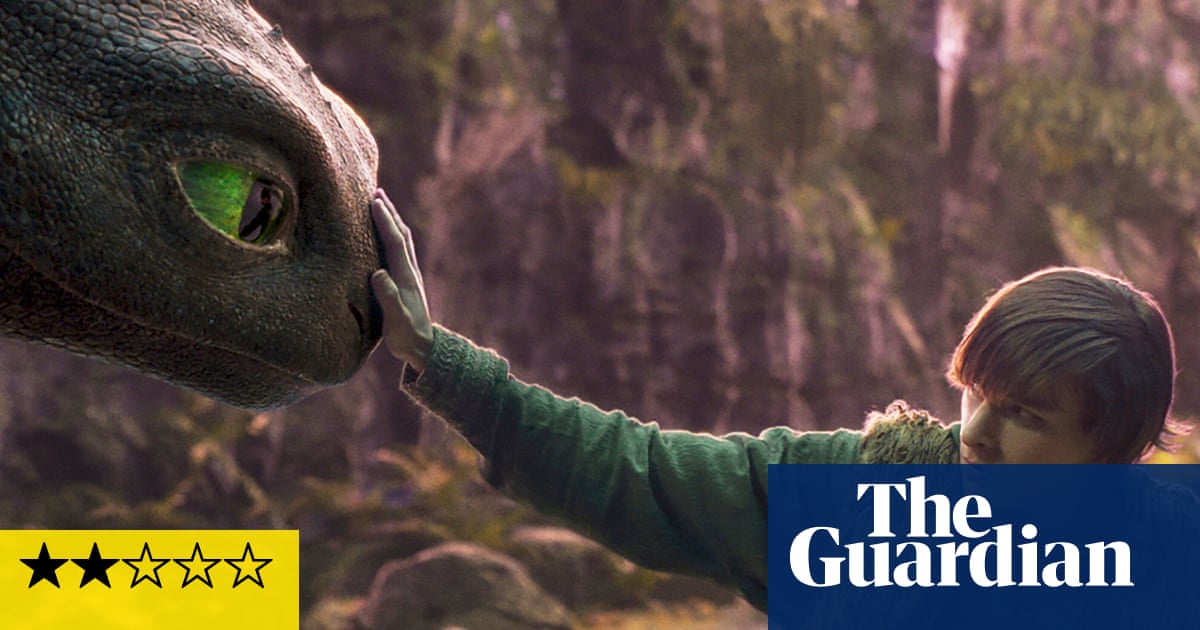It was only a matter of time before DreamWorks jumped on the lucrative live-action remake bandwagon with its soulless newHow to Train Your Dragon. Disney has been playing this cynical game since 1994 – releasing their Jungle Book remake (the one starring Jason Scott Lee) the same year DreamWorks was founded – and striking gold with Tim Burton’sAlice in Wonderland(2010), which arrived in theatres just weeks before the original How To Train Your Dragon landed.
It also comes as no surprise that DreamWorks moved with Night Fury speed to revisit a movie that’s only 15 years old. As the recentLilo & Stitchproved, there’s plenty box office gold to mine from introducing new children to a young and beloved property, while banking on the nostalgia that a generation without fully formed frontal lobes would carry for the not-so-distant animated films and TV spinoffs they were weaned on.
The younger audiences will no doubt be dazzled by the new How To Train Your Dragon, with its simple and appealing “ET but with Vikings” tale, which now features flesh-and-blood actors, some real landscapes and crashing blue waves (emphasis on “some”) and a still rascally and adorable Toothless – the name given to its central flying reptile. Meanwhile, the slightly older kids will likely find this retread functional and satisfying enough – as my own teens did – while being able to clock the diminishing returns.
Director Dean DeBlois, who helmed the original alongside Chris Sanders, returns, staying protective of and faithful to the original, in which an outcast adolescent named Hiccup (voiced with nasally anxiety byJay Baruchel), who is raised in a community insistent on slaying dragons with extreme prejudice, befriends Toothless, the aforementioned Night Fury with the jet-black sleekness of a panther but cuddly nature of a house cat.
The script, the gags and the action remain mostly intact. But this time around, real actors and sets become deadweight to a story that soared in larger-than-life animated form.
Some of the reasons are pretty obvious to anyone who spent enough time with these live action remakes. The green screen aesthetics, rendering surrounding environments (not to mention still computer-generated dragons), are less convincing and simply pale in comparison to the glorious images that made the original How To Train Your Dragon stand apart. Some scenes, like an opening night-time siege in which the Vikings of Berk, Hiccup’s village, battle dragons, are so muddy and low contrast that you can’t even make out the action. “The views are nothing to complain about,” says Hiccup, now played by Mason Thames, in the opening narration, where we can barely see a thing.
It’s worth noting that legendary cinematographer Roger Deakins was a visual consultant on the earlier movie. His influence is felt in the elegant animation, when faces and rustic sceneries often appeared beautifully lit by the glow from a nearby fire, or when Berk’s highland mist was just thick enough to achieve an emotional quality. In the most breathtakingly romantic moment from the original, when Toothless carries Hiccup and Astrid, the girl he cozies up to, into the skies, the pink-hued atmosphere tilts on an axis around the characters.
The new movie – so often shackled to a more static camera that can’t replicate the dynamic motion of the original (or even find a decent angle) – doesn’t even attempt that shot. Nor do the actors attempt a lot of the fun physical comedy and action from the original. It’s already a struggle for them to just incorporate the dialogue’s humour, written for pixels, into corporeal form.
Thames (of The Black Phone fame) plays Hiccup as slightly more petulant than petrified. As Astrid, Nico Parker plays things more cool than spunky, filling in her tough Viking girl performance with shades of bitterness over the class divide between her and Hiccup, whose father Stoic is the village chief. As Stoic, Gerard Butleris the most at home, not only because he’s reprising his role from the original, but because he has his own cartoonish demeanor that works spectacularly in both animation and live-action.
If there’s one moment that nearly grasps the visceral thrill of the original, it’s the centrepiece Avatar-like flight sequence, when Hiccup and Toothless sync up and soar through skies. The moment falls short of the simple and pristine beauty from the animated movie, when Toothless carves the clouds with his wings, but it’s got the same rollercoaster momentum as the dragon grazes the water and ducks through cavernous landscapes, the audience riding on his back alongside Hiccup. For many, that sequence will be worth the price of admission.
Perhaps another benefit to revisiting the franchise today is the opportunity to absorb the post-9/11 war on terror allegory that DeBlois and Sanders introduced to their original adaptation, in which the dragons rain down destruction from the skies.
Cressida Cowell’s 2003 source novel wasn’t about jingoistic and bloodthirsty Vikings who fear and seek to wipe out a misunderstood enemy desperately defending themselves. That element is exclusive to the movies, in which Butler’s Stoic yells: “They’ve killed hundreds of us.” Hiccup, defying the dominant narrative in his community, responds: “and we’ve killed thousands of them”.
The way those lines resonate today, as the war on Gaza rages on, will likely go over the heads of the target audience. But it’s a message worth repeating, even when packaged in muddled live action form.
How to Train Your Dragon is out in cinemas on 13 June
